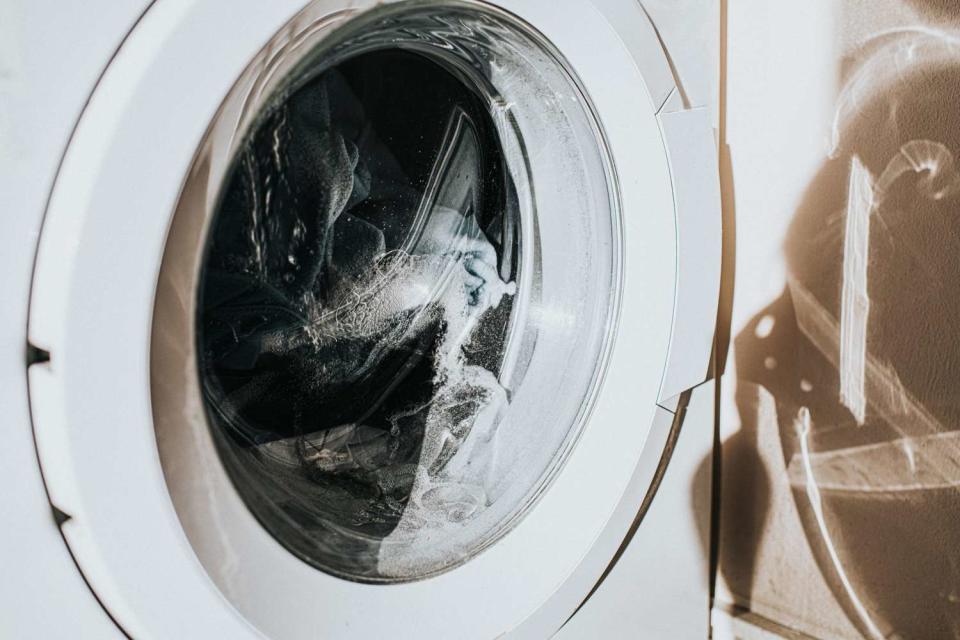How to Get Rid of Stubborn Clothing Sweat Odors and Stains
Certain stains and odors need a little more than detergent alone to remove them from your garments. Set-in marks, like those formed due to underarm sweat, can leave behind both discoloration and a lingering scent long after they have been washed. Ahead, learn how to combat these stubborn stains and odors to keep all of your laundry good as new for as long as possible.
Related: Martha's Quick Tip for Removing a Fresh Oil Stain from Clothing Is Genius

Catherine Falls Commercial / Getty Images
Odors build up on fabric over time.
It is what it is: Occasionally, not-so-great smells and stains stick to clothes after several washes. "Odors can actually build up on fabrics," explains Gwen Whiting, a laundry expert and the co-founder of The Laundress. "Odor on shirts, for example, is often caused by build-up of deodorant mixed with body oils and sweat." This can leave your fresh-from-the-wash clothes looking (and sometimes even smelling) anything but clean. According to Whiting, in order to solve your odor issues, you need to solve the build-up problem first.
Treat the build-up with a stain-removing paste.
Whiting recommends taking a stain formula—consider The Laundress' Stain Solution ($19, amazon.com)—and mixing it with an all-purpose bleach alternative to create a paste. Then, use a stain brush to ensure the concoction is thoroughly worked into areas with a lot of build-up (like the underarms of a shirt). "After, let the garment soak in a basin with hot water for at least an hour," notes Whiting. "You can also add a capful of scented vinegar to help deodorize."
This method works across a myriad of odors and stains.
Of course, sweat isn't the only stubborn scent you may find left on your clothes after they go through the wash. Vomit and pet urine leave behind stubborn odors, as well. Fortunately, Angela Richardson, the CEO of PUR HOME, says that the paste and soak methods should work across most of your laundry challenges.
Avoid heavily fragranced detergents.
It might be tempting to mask odor with a perfumed detergent, but Whiting says that would be a mistake. "While grocery store brands use heavy perfumes to cover the odor, they don't completely remove it at the source," she says. "Whether it's your workout clothes or a work blouse, [scented vinegar] works hard against smelly situations by using antibacterial properties to deodorize." She recommends soaking the offending garments in the hottest water appropriate for the fabric, with a capful of scented vinegar for 30 minutes. "You can also add scented vinegar to the wash for a deodorizing boost," she says.
Make a paste using items you already have.
If you don't have time to run to the store, Richardson explains that you can treat certain stains with ingredients you likely already have in your kitchen: baking soda and white vinegar. "Pour the white vinegar onto the stain, then add a paste of equal parts baking soda and vinegar to the stain," she says. "You can let this sit for 30 minutes and then toss in with your clothes and wash as directed on the label." To treat stubborn odors, Richardson says you can also add one cup of baking soda or vinegar to your load as you wash. "Purchase a laundry detergent that is highly effective at removing clothing odors," she adds, noting that you should also allow any smelly clothes to air dry, instead of throwing them into the machine.

